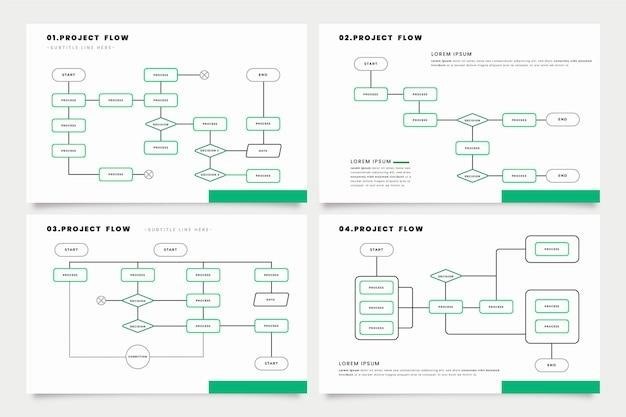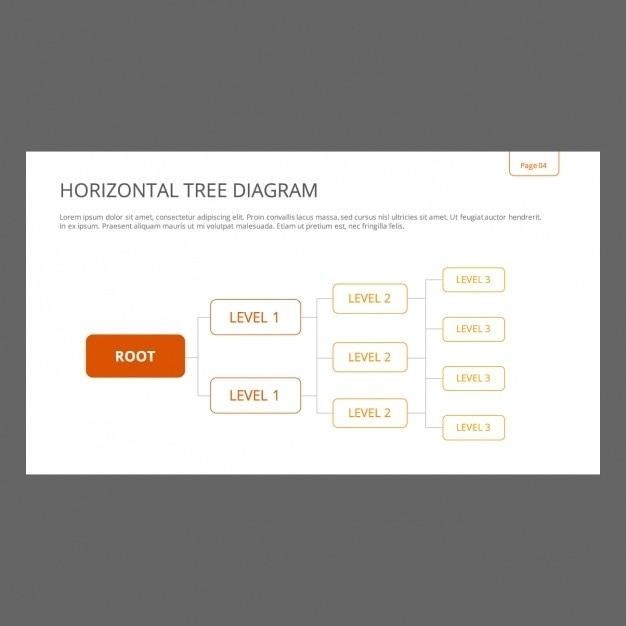
Bridge 2/1 Bidding System⁚ A Cheat Sheet
This cheat sheet provides a concise overview of the 2/1 game forcing system in bridge․ It covers key principles, responder’s initial bids, raising partner’s major suit, and follow-up bidding sequences․ Understanding alerting requirements and common conventions is crucial for successful 2/1 bidding․ This guide simplifies complex rules for efficient gameplay․
Introduction to 2/1 Game Forcing
The 2/1 Game Forcing (GF) system in bridge is a powerful bidding convention designed to efficiently reach game contracts․ Unlike standard bidding, where a two-level response might have various meanings, 2/1 establishes a clear agreement⁚ a two-level response to a one-level opening bid (excluding jumps and no-trumps) is forcing to game․ This means both partners are committed to reaching a game contract, regardless of the final result․ The system significantly streamlines the bidding process, particularly in the early stages, allowing partnerships to quickly assess their combined hand strength and identify potential game contracts․ This approach reduces ambiguity and improves the likelihood of reaching a successful game contract, making it a popular choice among bridge players of all skill levels․ The foundation of the 2/1 system rests on this game-forcing agreement between the opening bidder and the responder․
Basic Principles and Definitions of 2/1
The core of the 2/1 system lies in its response to a one-level opening bid․ A non-jump bid at the two-level in a new suit, following a one-level opening bid of a major suit (hearts or spades), signals a strong hand (generally 12+ high card points) and is forcing to game․ This means the partnership must strive for a game contract (at least a score of 100 points)․ Crucially, this forcing agreement applies only to specific scenarios․ Raises, jump shifts (a jump to a new suit), and no-trump responses are excluded from this 2/1 game-forcing rule․ The 2/1 system builds upon standard American bidding conventions, adding a layer of clarity and efficiency․ Understanding this fundamental principle—a two-level, non-jump response to a one-level major-suit opening is game-forcing—is essential for mastering the 2/1 system․ Variations exist, but this core principle remains constant․
Variations in 2/1 Bidding Systems

While the core principle of 2/1—a non-jump, two-level response to a one-level major-suit opening being game-forcing—remains consistent, variations exist․ Some partnerships might adjust the point requirements for the forcing bid, perhaps lowering it to 11 high card points or raising it to 13․ The treatment of responses to minor-suit openings also differs․ Some systems extend the 2/1 game-forcing convention to minor suits, while others retain standard American bidding conventions for these situations․ Additionally, the handling of strong two bids (weak two bids are usually unaffected) can vary across different 2/1 systems․ These variations reflect individual partnership preferences and strategic considerations․ It’s crucial for partners to clearly agree upon their specific 2/1 system variations before playing to ensure consistent interpretation of bids and prevent misunderstandings․ Consistent application of chosen variations is vital for successful bidding․
Responder’s First Bid in 2/1
In the 2/1 system, the responder’s initial bid holds significant weight․ A key element is the distinction between a jump bid and a non-jump bid․ A non-jump bid at the two-level in a new suit, following a one-level opening bid in a major suit, signals a game-forcing hand․ This typically requires at least an opening bid worth of high-card points (generally 12+ HCP) and shows support for the opener’s suit or an alternative game-worthy contract․ Conversely, a jump shift to a different suit, or a jump to no-trump, carries different meanings, not typically game forcing in standard 2/1․ Understanding this crucial difference is fundamental to the system․ Careful consideration should be given to hand strength and suit distribution before deciding on the appropriate response․ The responder’s first bid sets the stage for the rest of the auction, so accurate evaluation is paramount․ Remember that variations exist, so always check your partnership agreements․
Raising Partner’s Major Suit in 2/1
Raising partner’s major suit in a 2/1 system requires a nuanced approach, differing from standard bidding practices․ The strength of the raise depends heavily on the context of the bidding and the level of the raise․ A simple raise to the three-level generally demonstrates support for partner’s suit with at least three-card support and a minimum hand strength․ However, a jump raise (e․g․, from one heart to four hearts) signifies significantly greater strength, often showing a very strong hand capable of supporting a game contract, or even a slam․ The exact point ranges and card distributions required for specific raise types can vary depending on partnership agreements․ Therefore, consistent understanding and agreement between partners about the strength requirements for each type of raise are crucial for successful 2/1 play․ Be mindful of the potential for a slam and bid accordingly, particularly with strong hands or excellent suit fits․
Follow-Up Auctions in 2/1
Following the initial 2/1 game-forcing bid, subsequent auctions require careful consideration of hand strength and potential game contracts․ The opener’s rebid is crucial; a jump rebid usually signals a strong hand, often showing a hand that can support a game or even a slam in partner’s suit․ Non-jump rebids usually indicate a slightly weaker hand, but still supportive of a game․ Responder’s actions depend on the opener’s rebid; a jump to game shows great confidence in the partnership’s combined strength and the potential for a successful game contract․ However, if the opener’s rebid is not a jump, responder should evaluate their own hand strength and the likelihood of game before committing to a higher level․ Remember, the goal is to reach a game contract while considering the potential for slams․ Detailed partnership agreements on specific bidding sequences are essential for successful navigation of follow-up auctions within the 2/1 system․
Alerting Requirements for 2/1 Bids
Many 2/1 bids necessitate alerting due to their unconventional nature and potential for misinterpretation․ The primary reason for alerting is to ensure fairness and transparency․ A 2/1 bid, unlike standard responses, signals a strong hand and a commitment to reaching game, therefore requiring the opponents to be aware of the artificial nature of the bid․ Failure to alert can lead to unfair advantages․ Specific alerting requirements vary based on the bidding system and partnership agreements; however, generally, any 2-level response to a 1-level opening bid in a new suit should be alerted, unless it’s explicitly part of standard conventions․ Consult your regional rules and partnership agreements to determine which bids require alerting․ Accurate alerting ensures fair play and prevents misunderstandings among players at the table․ Remember that proper alerting is a crucial aspect of maintaining ethical and fair play within the game․
Common Conventions Used with 2/1
Several conventions enhance the 2/1 system’s effectiveness․ A common addition is Forcing No Trump (1NT), used by the responder to show a hand with 6-12 high card points (HCP) after a major suit opening․ This ensures game contract exploration․ Jacoby 2NT, showing four-card support for the opener’s major suit and strong high card points, is another frequently employed convention․ The use of “weak two” bids, indicating a six-card suit with fewer than 13 HCP, adds another layer of strategic bidding․ These conventions need to be agreed upon in advance by partners; otherwise, they lead to confusion․ Furthermore, the system may incorporate specific treatments for long suits․ Understanding these conventions is vital for accurate interpretation of bids and effective partnership communication․ Remember, the specific conventions used can vary, so clear communication with your partner beforehand is essential for successful play․
Advanced 2/1 Bidding Techniques
Mastering advanced 2/1 techniques elevates your bidding precision․ One key aspect involves nuanced responses to partner’s rebids․ For instance, a jump shift by the opener might signal a strong hand, requiring a reassessment of the game contract possibilities․ Understanding the implications of various jump bids is crucial․ Furthermore, advanced 2/1 strategies frequently integrate responses to opponents’ interventions․ This includes carefully evaluating takeout doubles and competitive bidding scenarios․ Proper handling of these situations demands a deep understanding of hand evaluation and partner’s bidding style․ Another advanced technique is the sophisticated use of “weak two” bids; these allow you to show a long suit while avoiding unnecessary commitment to a potential game contract․ Accurately judging the strength and quality of your hand, combined with precise interpretation of partner’s bids, is fundamental to employing these advanced techniques effectively․
2/1 Cheat Sheet Summary
The 2/1 Game Forcing system streamlines bridge bidding, creating a clear understanding between partners early in the auction․ A key feature is the forcing nature of a two-level response to a one-level opening bid, ensuring a game contract exploration․ This significantly reduces ambiguity compared to standard bidding systems․ Remember, this applies only to non-jump, new-suit bids․ Raises and no-trump responses are excluded from this forcing rule․ The system’s effectiveness relies on consistent application and agreement on conventions․ While simple in principle, mastering 2/1 requires practice and understanding of hand evaluation, particularly regarding point-count and suit length․ Successful 2/1 bidding hinges on precise interpretation of partner’s signals and bids, and a collaborative approach to reaching the optimal contract․ This summary emphasizes the system’s core functionality for efficient game play․
